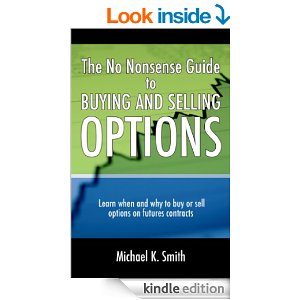Lean Hog Futures and Options
Market Trading

Learn the most effective strategies for buying and selling options
on futures contracts. Also learn producer and consumer hedging
strategies.
*The information contained within this webpage comes from sources
believed to be reliable. No guarantees are being made to the
content's accuracy or completeness.
Hogs are typically bred twice a year in order to provide a steady flow of
production. The gestation period for hogs is 3 1/2 months and the average
litter size is 9 piglets. They are usually weaned by 3-4 weeks of age and then
fed grains such as oats, corn and wheat to fatten them. Pigs typically gain 3.1
pounds per pound of feed and are often ready for slaughter at 6 months of age.
Hogs are usually ready
for slaughter at about 254 pounds and yield a dressed carcass weight of around
190 pounds which yields about 89 pounds of lean meat.
Chicago Mercantile Exchange (CME) Lean Hogs futures
and lean hog options contracts have undergone considerable
improvements. Effective with the February 1997
contract, new and improved specifications, including
a new name -Lean Hogs- instead of live hogs make this contract even a
more viable hedging tool for pork producers and packers
throughout the U.S. Learn More >>>
Are you a lean
hog hedger? If so,
click here to learn more.
Lean Hogs Options on Futures Contracts
Explained
A lean hog call option gives
the purchaser the right but not the obligation to purchase the
underlying futures contract for a specific time period and a specific
price (strike price). Let's say that you wanted to purchase a April
lean hog $1.00 call option and pay a premium of $1,260.
This means that you bought the right but not the
obligation to buy 40,000 pounds of April lean hogs for $1.00 per
pound. Of course, very few options are bought for the purpose of
taking delivery but that is one potential outcome. Chances are that
you either bought the lean hog option to hedge your price risk in
the physical lean hog market (maybe you are a producer and own a hog
farm or you are an end user and own a chain of barbeque restaurants)
or you are speculating that lean hog prices will go higher in an
attempt to make a profit.
A lean hog put option gives the
purchaser the right but not the obligation to sell the underlying
futures contract for a specific time period and a specific price.
Let's say that you wanted to buy an April lean hog .90 cent put
option and pay a premium of $1,800.
This means that you have the right but not the
obligation to sell 40,000 pounds of April lean hogs at .90 cents per
pound.
What is the delta factor?
The delta factor of an option represents the
estimated percentage of change an option will receive based on the
movements in the underlying futures contract.
Let's assume the April lean hog $1.00 call
option above has a 30% delta factor. This means that if the
underlying futures contract were to rally by $1,000, then the call
option would accrue by approximately $300 or 30% of $1,000 in the
feeder cattle futures contract.
What is theta?
Options are wasting assets which means that they
lose value as time passes. The theta of an option is the measure of
time decay.
Let's assume that you bought an April lean hog
$1.00 call option with 60 days left until expiration. Let's also
assume that the lean hog futures prices have moved very little over
the last month and are exactly the same price 30 days later. Your
option will have lost 30 days worth of time and therefore will be
worth less today that it was when it had 60 days left until
expiration.
What is
vega?
Vega is a measure of the implied volatility of
an option contract as it relates to its underlying futures contract.
For instance, if the underlying futures contract is extremely
volatile then the implied volatility of the options of that futures
contract will be affected.
In a high implied volatility environment option
premiums tend to expand. Conversely, in a low implied volatility
environment the option premiums tend to decrease.
*Contract information changes from time to time.
Please
click here to see the
most recent contract specifications and
click here
for the most recent trading hours.
Lean Hog Futures and Lean Hog Options
Contract Specifications
Trading Unit
Lean Hog Futures: 40,000 pounds of lean value hog
carcasses
Lean Hog Options: One Lean Hogs Futures Contract
Trading Hours
Lean Hog Futures: 9:05 a.m. to 1:00 p.m. LTD
(12:00pm) Central Time
Lean Hog Options: 9:05 a.m. To 1:00 p.m. LTD
(12:00pm) Central Time
Trading Months
Lean Hog Futures: Feb., April, May, June, July, Aug., Oct., Dec.
Point Description
Lean Hog Futures and Options: 1 point = $.0001 per
hundred pounds = $4.00
Contract Listings
Lean Hog Futures: Nine months of February, April,
June, July, August, October, and December. Effective
6/4/01, May is eligible.
Lean Hog Options: Eight months of February, April,
June, July, August, October, December, and Flex
Options. Effective 6/04/01, May is eligible.
Limits
Lean Hog Futures: $0.02/lb, 200 points, $800 see
Rule 1602 D
Minimum Price Fluctuation
Lean Hog Futures: 0.00025 = $10.00
Lean Hog Options: 0.00025 = $10.00 Regular, 0.000125
= $5.00 Cab
Lean Hog futures symbol (LH)
**Click Here Now!
for actual lean hog futures and options quotes, prices, expirations, charts .....

To learn more about the meat futures visit
live cattle futures,
feeder cattle futures
and porkbelly futures.
SITE MAP
|
